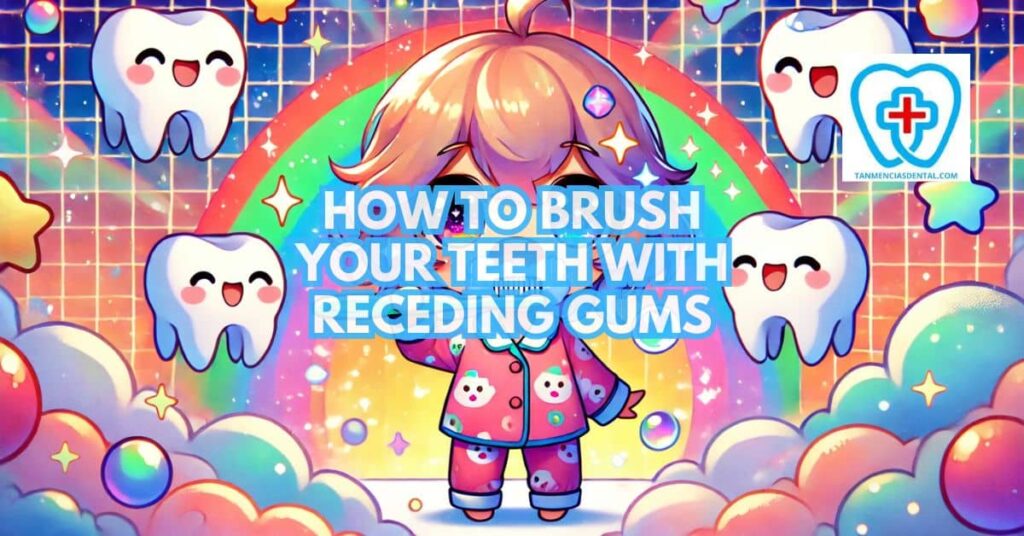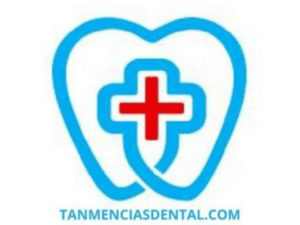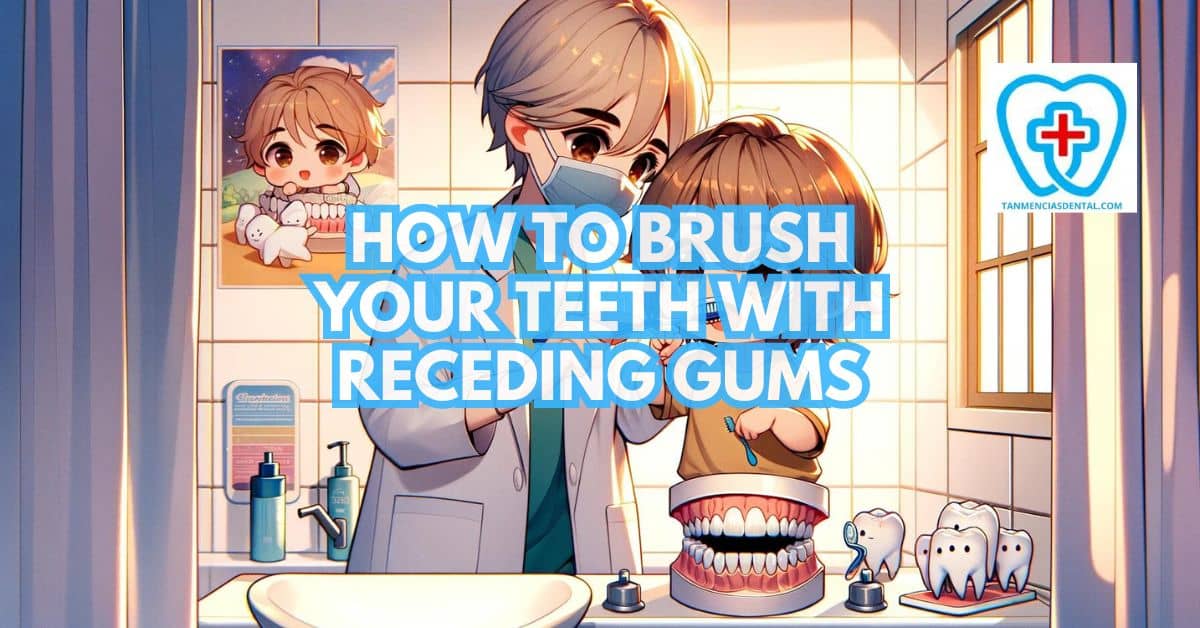Caring for your teeth becomes more important when you have receding gums, as the condition can make your mouth more sensitive.
Knowing how to brush your teeth with receding gums is key to protecting your gums from further damage.
With the right techniques and tools, you can clean your teeth effectively while reducing the risk of gum irritation or tooth sensitivity.
Brushing carefully helps maintain your overall oral health and prevents more serious dental problems.
We’ll explain how to brush in a way that supports your gum health without causing harm.
1. Receding Gums: Understanding the Issue
Receding gums, a common dental issue, occurs when the gum tissue around the teeth gradually pulls back or wears away.
This exposes more of the tooth or the tooth’s root, leading to potential sensitivity and other dental problems.
Various factors can cause gum recession, including aggressive tooth brushing, periodontal disease, and even genetics.
Early recognition and understanding of these causes are fundamental to preventing further gum damage.
Addressing receding gums early can help manage symptoms effectively and avoid severe dental complications.
🦷 Can Flossing Remove Tartar and Keep Your Smile Bright? The Truth About Oral Hygiene
2. Eating Right for Healthy Gums
Good nutrition is essential for keeping your gums strong and preventing them from receding.
Eating foods rich in vitamin C, like oranges and spinach, helps your gums stay healthy by boosting collagen production.
It’s important to limit sugary and acidic foods because they can lead to plaque buildup and damage your tooth enamel.
Drinking plenty of water helps wash away food particles and bacteria, keeping your mouth clean and reducing the risk of gum problems.
By choosing the right foods and staying hydrated, you can support your gum health and maintain a bright, healthy smile.
🦷 How to Brush Your Teeth With Salt: Unlocking a Natural Smile
3. Electric or Manual? Choosing the Right Brush
Choosing the correct type of toothbrush is critical in managing receding gums.
A soft-bristled brush is ideal as it is gentle on both the teeth and gums, reducing the likelihood of causing additional recession or irritation.
Electric toothbrushes can be particularly effective because they often come with pressure sensors and timers that help ensure gentle, consistent brushing.
However, a manual toothbrush with soft bristles can also be effective if used with proper technique.
The key is to focus on gentle, effective brushing rather than the type of brush alone.
🦷 Can Salt Whiten Teeth? The Role of Salt in Traditional and Modern Whitening Practices
4. Brushing with TLC: Gentle Techniques for Sensitive Gums
It is crucial to brush with a technique that minimizes harm to your receding gums.
Use a soft touch and avoid vigorous or harsh brushing, which can aggravate sensitive gums and lead to further recession.
Small, circular motions with the brush help cover more surface area of each tooth while being gentle on the gums.
Brush for at least two minutes, dividing your mouth into sections to ensure all areas get attention.
Remember, the goal is to clean your teeth thoroughly without causing discomfort or damage to your gums.
🦷 How to Treat Gingivitis in Kids: Keeping Kids’ Gums Healthy

5. Angled Assault: Reaching Under the Gum Line Effectively
To effectively clean under the gum line, where plaque and bacteria often accumulate, angle the toothbrush at a 45-degree angle towards the gums.
This technique allows the bristles to gently reach under the gum line, disrupting the hidden plaque without applying excessive pressure that could harm sensitive gums.
Gentle and precise strokes should be used to slowly work around each tooth, ensuring that all surfaces are addressed.
Consistency in this method helps prevent the buildup of plaque that can lead to periodontal disease.
Regular practice of this angled brushing technique can significantly improve gum health and reduce the risk of further recession.
🦷 Can You Die From Cavities? Understanding the Risks of Untreated Tooth Decay
6. Massage, Not Mayhem: Cleaning Gently with Circular Motions
Using circular or rolling motions to brush can provide a massaging effect that promotes gum health and circulation rather than causing stress and damage.
These gentle motions help dislodge food particles and plaque without irritating the gums.
Focus on making soft, slow circular movements with the brush, which can be more effective than back-and-forth scrubbing.
This method is particularly beneficial for those with sensitive or receding gums, as it minimizes trauma and inflammation.
Regularly using this technique can improve gum tightness and overall oral cleanliness.
🦷 How to Stop Gagging When Brushing Teeth: Say Goodbye to Discomfort
7. Fluoride’s Fight: Protecting Exposed Teeth
Fluoride toothpaste is essential for those with receding gums, as it helps protect exposed roots and reduce the risk of cavities.
Fluoride strengthens tooth enamel, making it less susceptible to decay and erosion near the gum line.
It is important to use fluoride toothpaste at least twice a day to form a protective barrier over the weakened areas.
Additionally, fluoride can help desensitize teeth, reducing pain from exposed roots linked to gum recession.
Regular use of fluoride toothpaste is a key defense for maintaining the health of teeth affected by receding gums.
🦷 Can You Brush Your Teeth Before Wisdom Teeth Surgery? Preparing for Wisdom Teeth Removal
8. Taming the Tingles: Using Toothpaste for Sensitive Teeth
For individuals with receding gums, choosing the right toothpaste can make a significant difference in their daily comfort.
Toothpastes designed for sensitive teeth contain ingredients that help block the pathways through which pain signals are sent from the tooth surface to the nerve.
These specialized toothpastes can alleviate the discomfort associated with tooth and gum exposure due to gum recession.
Applying a small amount of this toothpaste to particularly sensitive areas before bedtime can provide overnight relief.
Frequent use can make cleaning easier and reduce sensitivity, which can enhance your quality of life.
🦷 Brushing and Flossing with Braces: Flashing a Flawless Smile
9. Beyond Brushing: Interdental Cleaning for Healthy Gums
Even with thorough brushing, interdental cleaning is essential for preventing gum disease, especially when dealing with receding gums.
Tools like dental floss, interdental brushes, or water flossers can effectively clean spaces between teeth and below the gumline where a regular toothbrush can’t reach.
These tools help remove plaque and food particles that contribute to gum inflammation and recession.
Using them at least once a day is recommended for optimal gum health.
Integrating interdental cleaning into your daily routine can significantly reduce the risk of further gum recession and other periodontal diseases.
🦷 Can You Brush Your Teeth After A Filling? Understanding the Dos and Don’ts
10. Listen to Your Gums: When to Seek Professional Help
Monitoring your gums for signs of worsening symptoms, such as increased sensitivity, bleeding, or pain, is crucial.
If these symptoms persist despite your best home care efforts, it’s important to seek professional help.
A dentist can assess your oral health condition and recommend treatments or changes to your dental care routine to better support your gums.
Early intervention by a professional can prevent further damage and help maintain your oral health.
Don’t hesitate to schedule a consultation if you notice any troubling changes in your gum health.
🦷 Mouth Peels After Brushing Teeth: Let’s Check Why
11. The Dentist’s Advantage: Professional Care for Receding Gums
Regular visits to the dentist are invaluable for managing receding gums.
Professional cleanings can remove plaque and tartar buildup that regular brushing and flossing can’t handle.
Dentists can also provide targeted treatments, such as scaling and root planing, to treat gum disease that may be causing or worsening gum recession.
In severe cases, surgical options may be discussed to restore gum health and coverage.
Leveraging the expertise and tools available at a dental office can significantly enhance your oral health outcomes.
🦷 Can You Die From Tooth Abscess? Understanding the Risks and Symptoms
👨⚕️ Conclusion
Maintaining healthy gums is a lifelong commitment, especially when dealing with challenges like receding gums.
Adopting a comprehensive oral hygiene routine, utilizing the right tools, and seeking professional advice are all key to managing this condition effectively.
Remember, taking proactive steps to care for your gums not only preserves your dental health but also contributes to your overall well-being.
Stay consistent with your care, be mindful of the signs that require professional attention, and visit your dentist regularly to keep your smile healthy and bright for years to come.
😊 Self-Promotion
Visit us at Tan-Mencias Dental Clinic in Parang, Marikina City, where your smile and dental health are our top priorities!
Our friendly team is ready to provide you with top-notch dental care in a comfortable and welcoming environment.
For any questions or to schedule an appointment, feel free to call us at 9171451074, send us a message through our Facebook page, or contact us through our website.
We’re here to help you achieve and maintain a healthy, beautiful smile.
We look forward to welcoming you to our clinic and being a part of your dental care journey!

